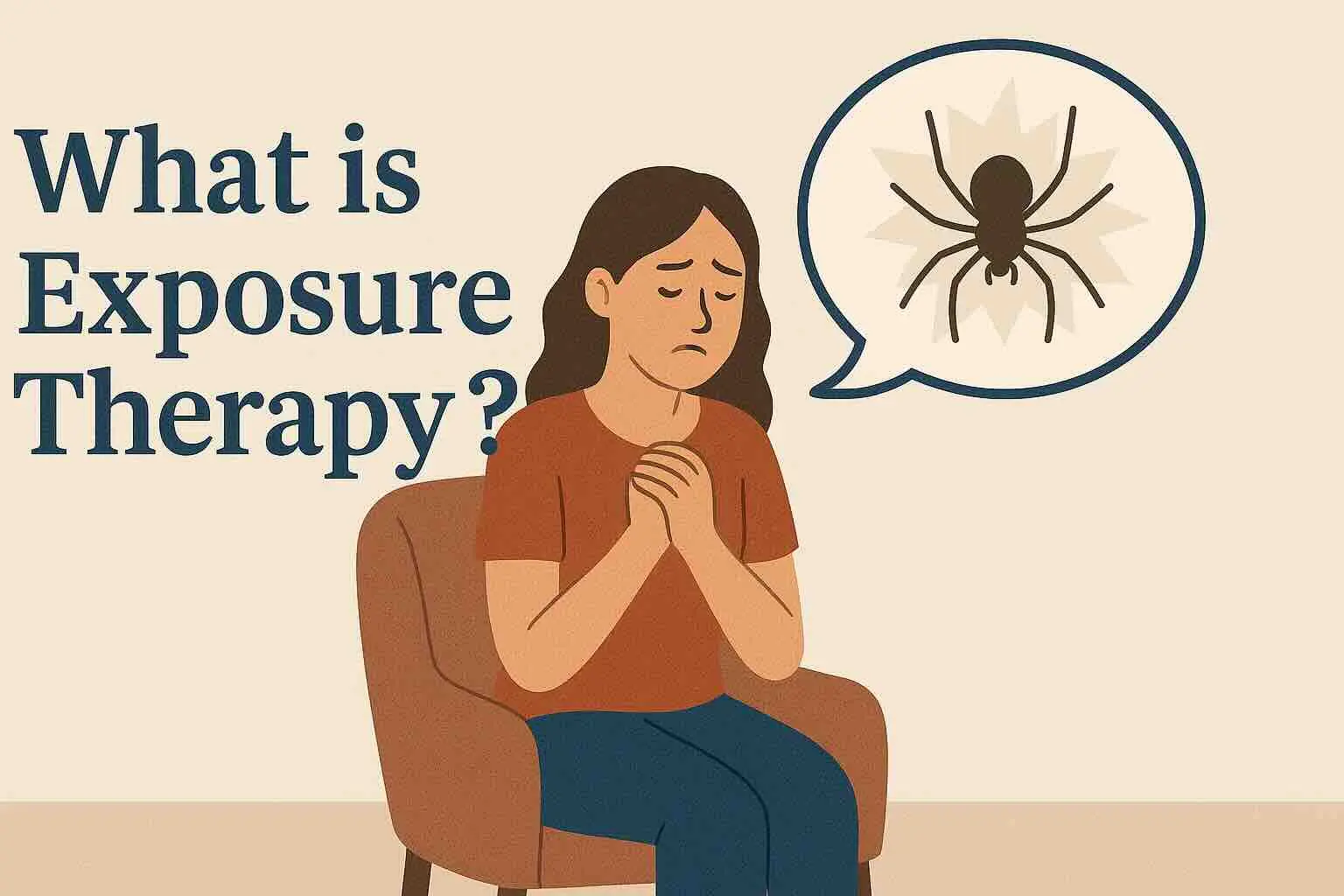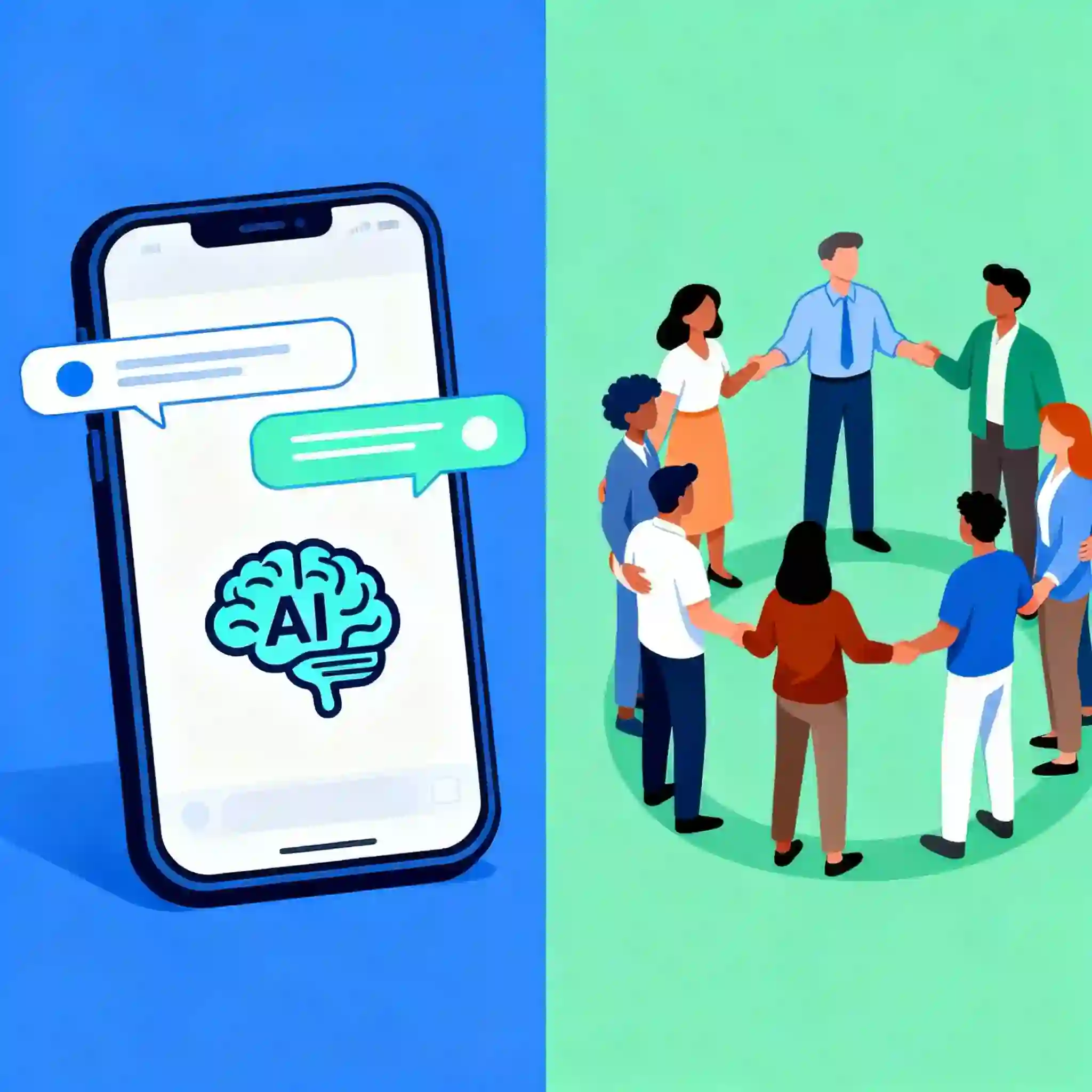TL;DR
Exposure Therapy reduces anxiety and fear responses by systematically confronting feared stimuli. Delivered virtually via chat or call, Noah AI guides three main methods—in vivo, imaginal, and interoceptive exposures—helping clients practice real-world tasks, process feared scenarios, and tolerate physical sensations. Research reports large effect sizes (d ≥ 0.8) for specific phobias and moderate effects (d ≈ 0.7) for PTSD and social anxiety.
Exposure Therapy harnesses the brain’s natural capacity for habituation and extinction learning. By repeatedly facing feared situations without avoidance or safety behaviors, anxiety diminishes over time, and clients build confidence in their ability to tolerate distress.
Core Principles
- Fear Hierarchy: Clients rank fear triggers from least to most anxiety-provoking.
- Systematic Confrontation: Progress gradually up the hierarchy through guided exercises.
- Response Prevention: Clients refrain from avoidance and safety behaviors during exposure.
- Anxiety Monitoring: Track subjective units of distress (SUDs) to measure progress.
Three Exposure Methods via Chat and Call
1. In Vivo Exposure
Noah AI coaches clients through real-life tasks via chat or call:
- Step-by-Step Guidance: Break down tasks (e.g., approaching a dog) into manageable steps.
- Anxiety Ratings: Clients report SUDs before, during, and after each step.
- Virtual Accountability: Noah AI schedules and reminds clients of practice assignments.
2. Imaginal Exposure
For fears that are not easily accessible or for trauma processing:
- Guided Narration: Noah AI prompts detailed descriptions of the feared scenario or memory.
- Emotional Processing: Clients share emotional and sensory details while Noah AI helps ground them.
- Repeated Rehearsal: Sessions revisit the narrative until distress decreases.
3. Interoceptive Exposure
Clients practice tolerating feared physical sensations:
- Symptom Induction Exercises: Noah AI instructs on safe breathing patterns, light exercise, or posture changes to elicit heart palpitations or dizziness.
- Monitoring and Coaching: Clients rate distress and Noah AI coaches through acceptance and breathing exercises.
- Skill Reinforcement: Reminders to practice regularly to reduce fear of physical sensations.
Treatment Process
- Assessment & Education: Noah AI explains the rationale, anxiety cycle, and safety guidelines via chat/call.
- Hierarchy Development: Collaboratively list and rank fear triggers.
- Exposure Planning: Noah AI schedules practice sessions and provides detailed instructions.
- Guided Exposure Sessions: Real-time coaching through steps, imaginal scripts, or interoceptive exercises.
- Homework & Review: Clients complete between-session assignments and report back to Noah AI.
- Relapse Prevention: Noah AI helps identify potential setbacks and plan maintenance practice.
Evidence for Effectiveness
- Specific Phobias: Meta-analyses report very large effect sizes (d > 1.0) with >75% remission rates.
- PTSD (Prolonged Exposure): Moderate-to-large effects (d ≈ 0.8) sustained at 12-month follow-up.
- Social Anxiety: In vivo and imaginal exposures yield moderate effects (d = 0.7–0.9).
- Panic Disorder: Interoceptive exposure reduces panic attacks by 60–80%.
Who Benefits Most
- Specific Phobia Sufferers: Fear of animals, heights, flying, injections.
- PTSD Patients: Trauma survivors needing narrative processing.
- Social Anxiety Disorder: Fear of public speaking or social situations.
- Panic Disorder: Individuals fearful of bodily sensations.
- OCD with Exposure and Response Prevention: When combined with ERP protocols.
Noah AI’s Role and Limitations
- Virtual Delivery Only: All exposure guidance occurs via chat or call—no external devices required.
- Feasibility Checks: Noah AI confirms real-life practicality before assigning in vivo tasks.
- Safety Protocols: Exposure tasks adapted to each client’s environment and comfort level.
- No Direct Supervision: Clients perform exercises independently with AI support; human oversight not provided.
- Continuous Support: Noah AI remains available for encouragement, troubleshooting, and progress tracking.
Frequently Asked Questions
Is exposure therapy safe virtually?
Yes, when exercises are feasible in your environment and safety guidelines are followed. Noah AI ensures tasks match your context.
How quickly does anxiety decrease?
Anxiety typically peaks within minutes of exposure and then declines. Repeated practice leads to faster habituation.
Can I skip in vivo and do only imaginal?
Imaginal exposure can be effective for certain fears or trauma memories, but combining methods often yields best results.
What if my environment changes?
Noah AI adapts exposure tasks based on your current setting and ensures feasibility before each assignment.
Conclusion
Exposure Therapy offers a powerful, evidence-based approach to overcoming fear and anxiety through systematic, guided confrontation. Noah AI’s AI-guided chat and call sessions make this transformative practice accessible anytime, anywhere—helping you build resilience by facing fears head-on and reclaiming freedom from avoidance.
Download the Noah AI app for iPhone and Android today.
References
- Specific Phobias: A Systematic Review and Meta-Analysis – Clinical Psychology Review
https://doi.org/10.1016/j.cpr.2020.101801 - Prolonged Exposure for PTSD: A Meta-Analysis – JAMA Psychiatry
https://jamanetwork.com/journals/jamapsychiatry/fullarticle/2597147 - Exposure Therapy for Social Anxiety Disorder – Journal of Anxiety Disorders
https://doi.org/10.1016/j.janxdis.2014.02.003 - Interoceptive Exposure in Panic Disorder – Behaviour Research and Therapy
https://doi.org/10.1016/S0005-7967(98)00127-5







